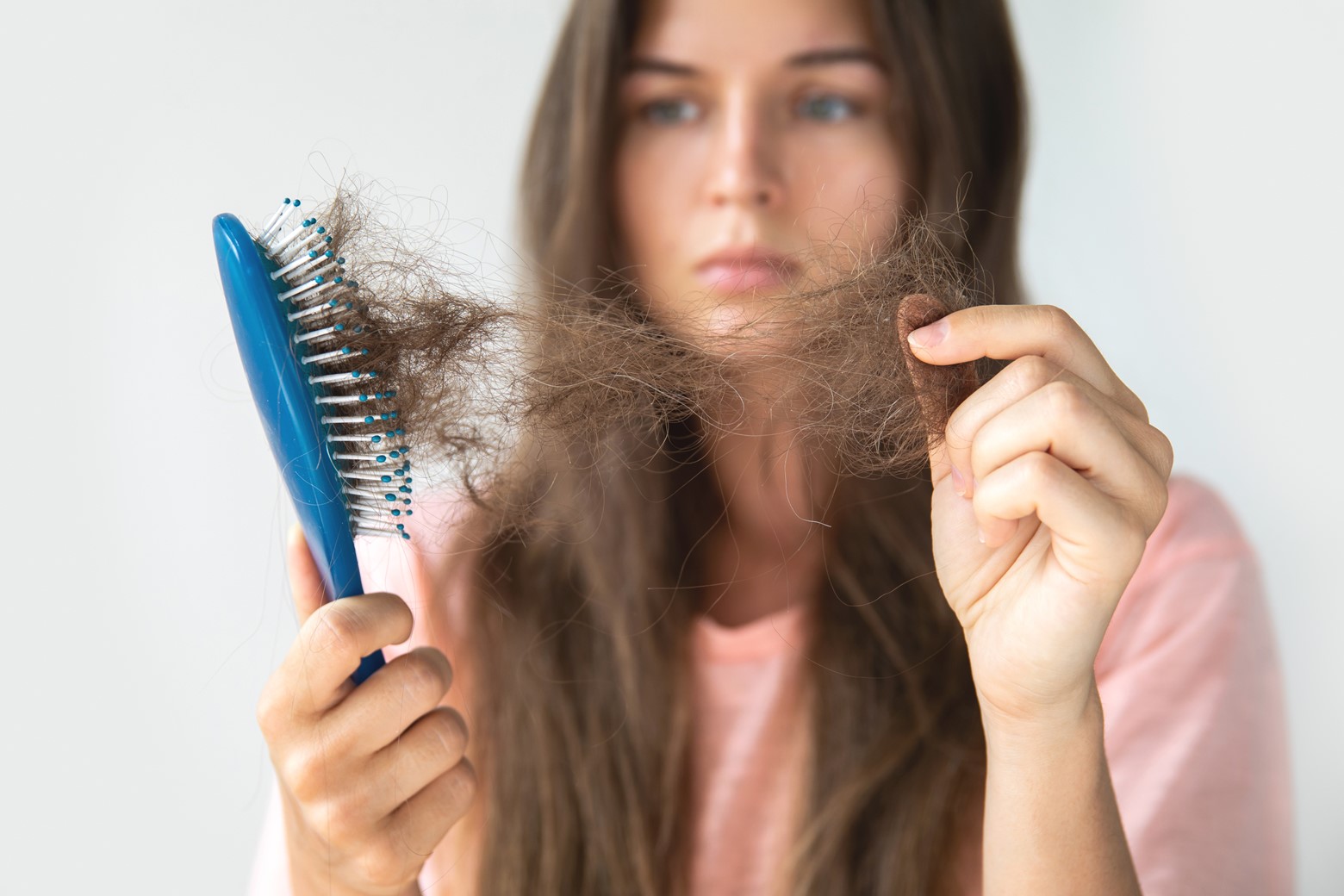Understanding the distinction between normal hair shedding vs hair loss is crucial for managing hair health effectively. While everyone loses some hair daily, significant hair loss can indicate more serious concerns. This blog will not only help you understand and differentiate these two scenarios but also offer actionable insights to protect your strands. We’ll delve into the hair growth cycle, identify typical shedding ranges, recognize warning signs of loss, explore the causes of balding, and provide steps for maintaining hair health.
Demystifying Hair Shedding vs Hair Loss
Hair shedding is a part of the natural hair cycle and includes losing about 50-100 hairs daily, which is completely normal. Conversely, hair loss involves excessive shedding or noticeable thinning, which might be cause for concern. Signs of this include bald patches or clumps of hair falling out. It is important to distinguish between shedding vs hair loss so you can take the right action. Choosing between enhancing hair care routines or seeking professional advice depends on understanding these signs.
The Hair Growth Cycle: Natural Shedding Exposed
The hair growth cycle consists of phases: anagen (growth), catagen (transition), telogen (resting), and exogen (shedding). The exogen phase causes natural shedding, with follicles releasing hair that’s finished its lifecycle. This turnover is a healthy part of hair renewal. Recognizing this cycle helps differentiate normal hair shedding vs hair loss concerns.
Identifying Normal Hair Shedding
Normal shedding vs abnormal loss often goes unnoticed since losing 50-100 hairs daily is typical. Stress, seasonal changes, or new hair products can temporarily increase shedding. These factors should not alarm you unless they lead to visible thinning. It’s important to understand these influences to avoid unnecessary panic.
Recognizing Red-Flags: When Shedding Turns into Loss
Watch for warning signs that hair shedding is progressing to loss. Visible patches, thinning, or excessive clumps when brushing indicate issues. More than typical hair fall needs professional evaluation. Hair loss vs shedding is not just numerical. While shedding is temporary, loss is progressive and often persistent.
Exploring the Causes of Hair Loss
Several factors can lead to hair loss, including:
- Genetics: Family history plays a big role.
- Hormonal Changes: Pregnancy, menopause, and thyroid issues can affect hair.
- Medical Conditions: Autoimmune diseases and anemia might lead to thinning.
- Medications: Some drugs have side effects that include hair fall.
- Stress and Diet: Nutritional deficiencies and stress impact hair health significantly.
Recognizing that sometimes hair loss can signal underlying health issues is essential for timely medical attention.
Shedding, Thinning, Balding: Understanding the Differences
Understanding hair thinning vs shedding is vital. Thinning indicates a reduction in hair density but isn’t as sudden as shedding or as severe as balding. Factors like aging or poor nutrition contribute to thinning. Recognizing this early and adopting proactive care can prevent progression to balding vs shedding stages.
Proactive Steps to Prevent Unnecessary Hair Shedding and Loss
Preventing excessive hair shedding and loss involves:
- Balanced Diet: Include iron, omega-fatty acids, and vitamins for hair health.
- Gentle Styling: Avoid tight hairstyles that strain hair.
- Stress Management: Engage in relaxing activities like yoga and meditation.
- Prompt Consultation: Seek help for persistent symptoms.
Adopting these tips helps maintain hair health and prevent unneeded issues.
Debunking Myths: Separating Fact from Fiction
Let’s correct some myths:
- Myth: Washing hair leads to hair loss. Fact: Washing keeps the scalp and hair clean and healthy.
- Myth: Brushing hair too often causes shedding. Fact: Brushing distributes oils and stimulates the scalp.
Understanding these truths helps you make informed decisions.
Navigating Seasonal Changes: Adaptation Tips
Seasonal changes affect hair health. Winter’s dry air and summer’s humidity can impact your hair. To adapt:
- Hydrate: Use moisturizers and conditioners.
- Protection: Wear hats to shield from harsh weather.
Adjusting your routine reduces shedding and hair loss during seasonal changes.
Conclusion: Taking Charge of Your Hair’s Future
By comprehending the difference between normal hair shedding vs hair loss, you’re equipped to protect your strands. Recognize the symptoms and causes of excessive shedding and loss. Be proactive in managing hair health through diet, gentle care, and professional guidance as needed. Keep myths at bay and adapt through seasons to ensure a healthy hair future.
Take Control of Your Hair Health Today!
At Dermax Skin and Hair Transplant, we understand the concerns surrounding hair shedding and loss. Whether it’s due to genetics, stress, or medical conditions, our expert team is here to help you regain your confidence and restore your hair.
Book your consultation now and explore personalized solutions tailored to your hair needs. Don’t wait — let us help you get the healthy, vibrant hair you deserve!


